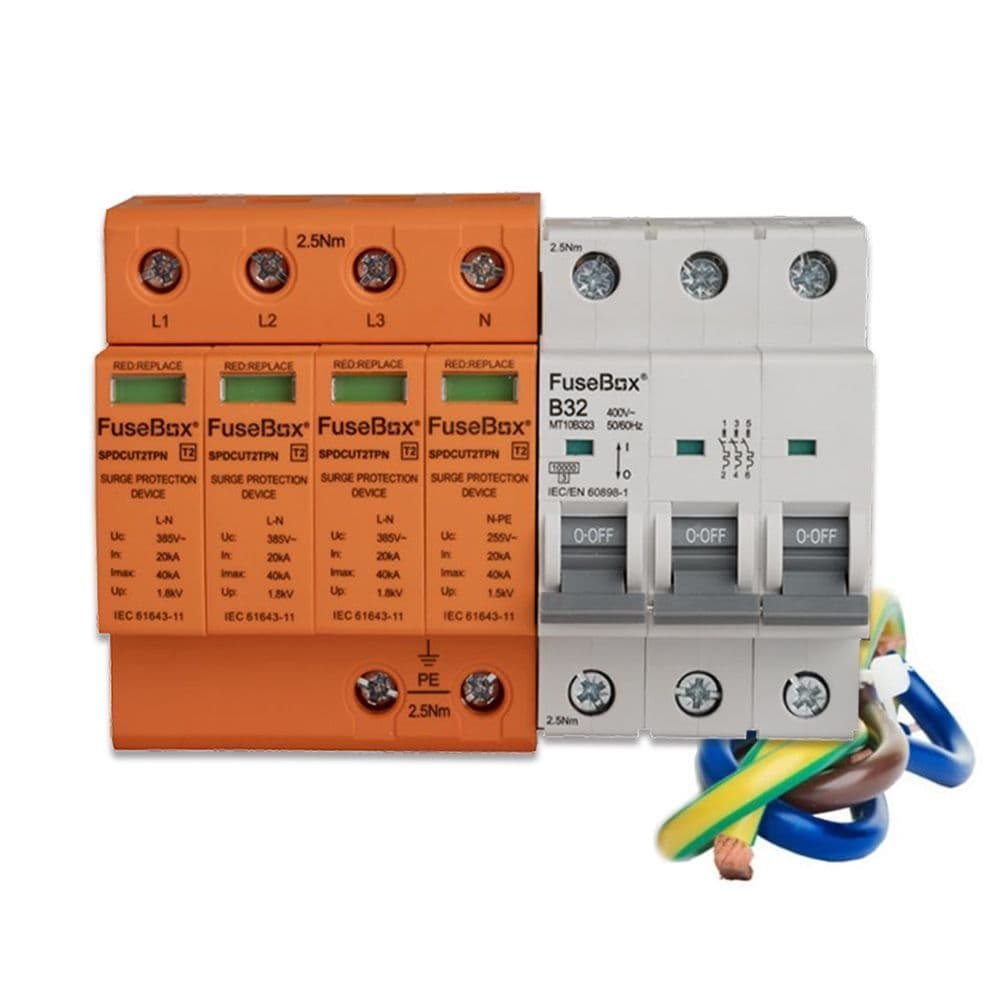1. What is a Surge?
A surge is a transient overvoltage that exceeds the normal operating voltage.

2. What is a Surge Protector?
A surge protector is an electronic device that, upon detecting a sudden spike in current or overvoltage due to external interference in an electrical circuit or communication line, can quickly conduct and divert the excess current. This helps to prevent the surge from damaging other equipment in the circuit.
3. What is the Difference Between a Switching Surge Protector and a Voltage Limiting Surge Protector?
- Switching Surge Protectors: These are gap discharge devices with high lightning energy discharge capability. They are primarily used to discharge lightning energy in the circuit.
- Voltage Limiting Surge Protectors: These are made of zinc oxide varistors and have lower lightning energy discharge capabilities but excel at suppressing overvoltage. In typical applications, a switching surge protector like the Asafe series is installed at the building entrance to discharge lightning energy, followed by a voltage limiting surge protector like the AM series in downstream circuits to suppress any residual overvoltage caused by the discharged energy. Both types of surge protectors should be used together to ensure the safety of the equipment in the distribution circuit.
4. How to Select a Miniature Circuit Breaker to Pair with a Surge Protector?
- The Asafe switching module, due to its open-circuit failure mode, does not require a miniature circuit breaker.
- For the first-stage module, such as the AMI-40, a 63A D-type miniature circuit breaker with a breaking capacity of 10kA should be selected.
- For the second-stage module, such as the AM2-20, a 32A C or D-type miniature circuit breaker with a breaking capacity of 6.5kA is recommended, with a preference for the D-type due to its specific tripping curve.
- For the third-stage module, such as the AM3-10, a 16A C or D-type miniature circuit breaker with a breaking capacity of 4.5kA is recommended, again with a preference for the D-type due to its tripping characteristics.
5. Should a Fuse be Installed Before All Surge Protectors?
No, it is not necessary. Switching surge protector modules, due to their open-circuit failure mode, do not require the installation of fusing devices such as miniature circuit breakers.
Overview of Surge Protectors
Surge protectors, also known as lightning arresters, are electronic devices designed to provide safety protection for various electronic equipment, instruments, and communication lines.
A standard surge protector channels current from a power outlet to multiple electrical and electronic devices plugged into a power strip. If a surge or spike occurs, causing the voltage to exceed acceptable levels, the surge protector quickly conducts and diverts the excess current, preventing damage to the circuit’s other devices.
Based on the selected surge protector and the expected environmental impact, the protection measures needed for the system’s power supply and equipment are classified into three levels:
- Class B Surge Protectors: Tested for nominal discharge current (In), impulse voltage (1.2/50 μs), and maximum impulse current (Iimp), with an Iimp waveform of 10/350 μs and a maximum Up of 4kV (IEC 61643-1; IEC 60664-1).
- Class C Surge Protectors: Tested for nominal discharge current (In), impulse voltage (1.2/50 μs), and maximum impulse current (Iimp), with an Iimp waveform of 8/25ms.
- Class D Surge Protectors: Tested with a combination wave (open circuit voltage 1.2/50 μs and impulse current 8/25 μs).
Key Factors to Consider When Choosing a Surge Protector:
- Clamping Voltage: This is the voltage at which the MOV (Metal Oxide Varistor) conducts to the ground. Lower clamping voltage indicates better protection. The UL nominal ratings include three protection levels—330V, 400V, and 500V. Typically, a clamping voltage above 400V is considered too high.
- Energy Absorption/Dissipation Capability: This rating indicates how much energy the surge protector can absorb before it fails, measured in joules. Higher values indicate better protection. Surge protectors should have a rating of at least 200 to 400 joules, with 600 joules or more for better protection.
- Response Time: Surge protectors do not respond instantaneously; there is a slight delay in their response to surges. The shorter the response time, the less time your computer (or other devices) will be exposed to the surge. Look for a surge protector with a response time of less than one nanosecond.
Additionally, it is advisable to purchase surge protectors with indicator lights to show whether the protection components are functioning. After multiple surges, all MOVs will eventually fail, but the protector may still function as a power strip. Without an indicator light, it is impossible to know if the protector is still working correctly.



